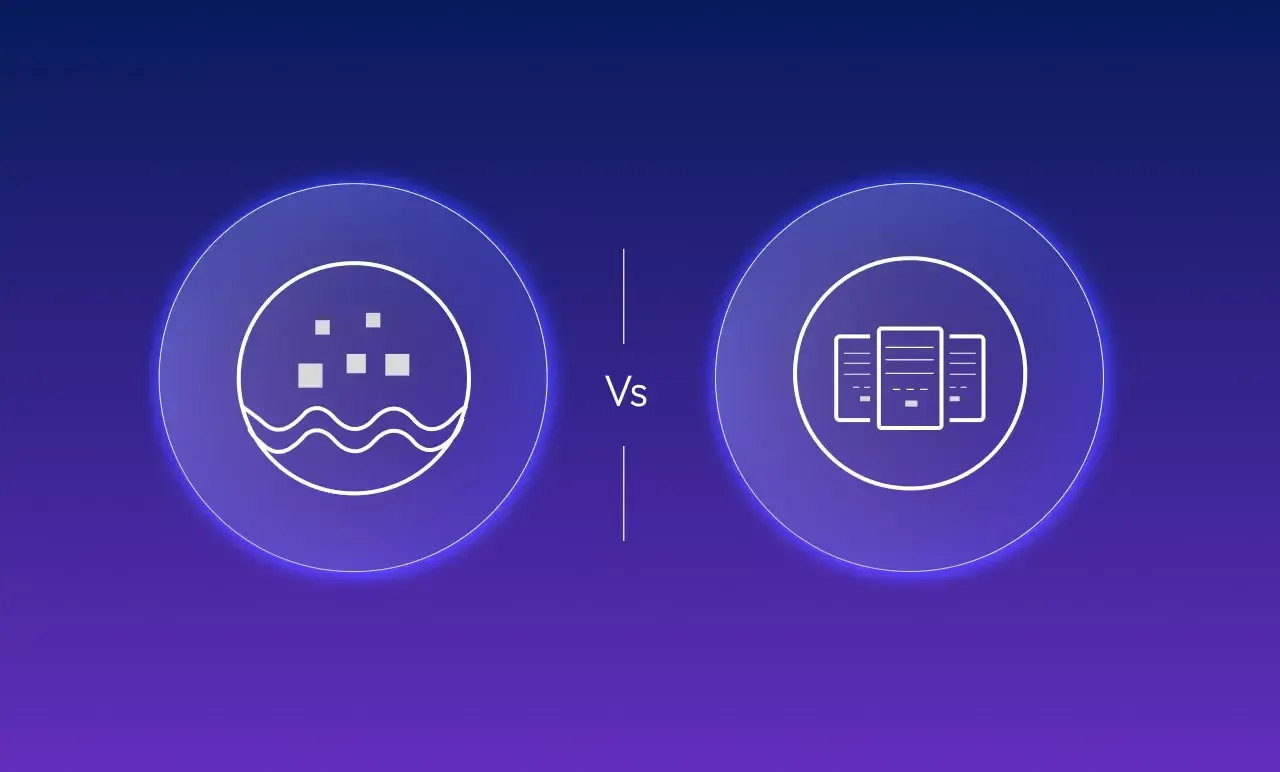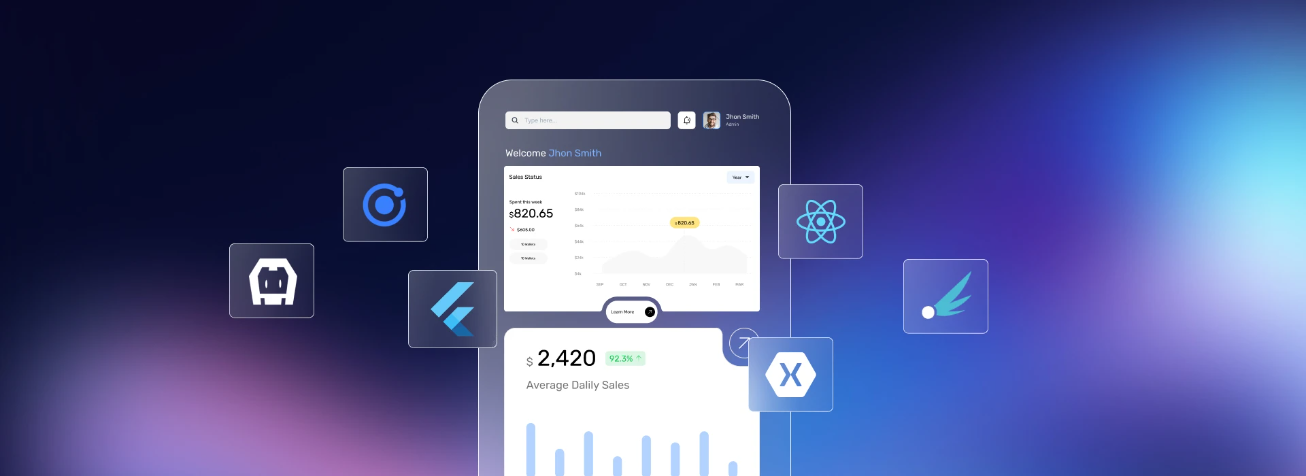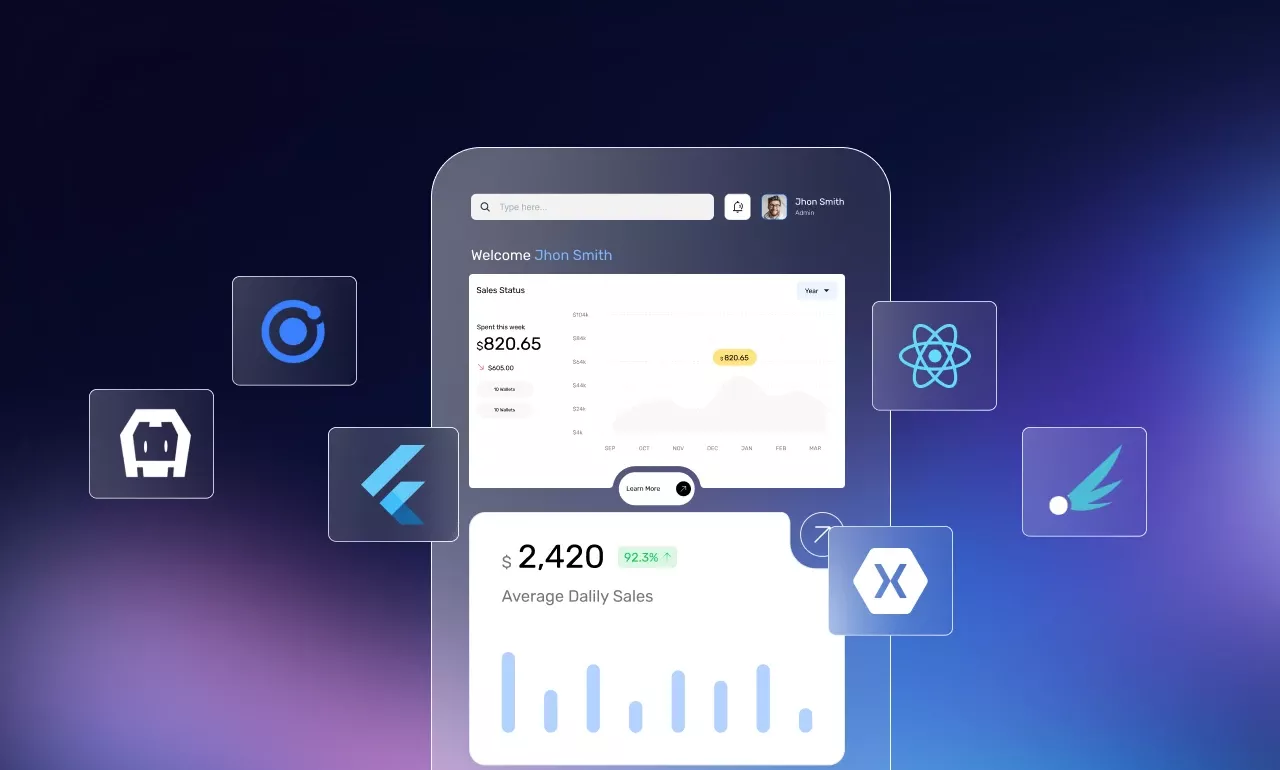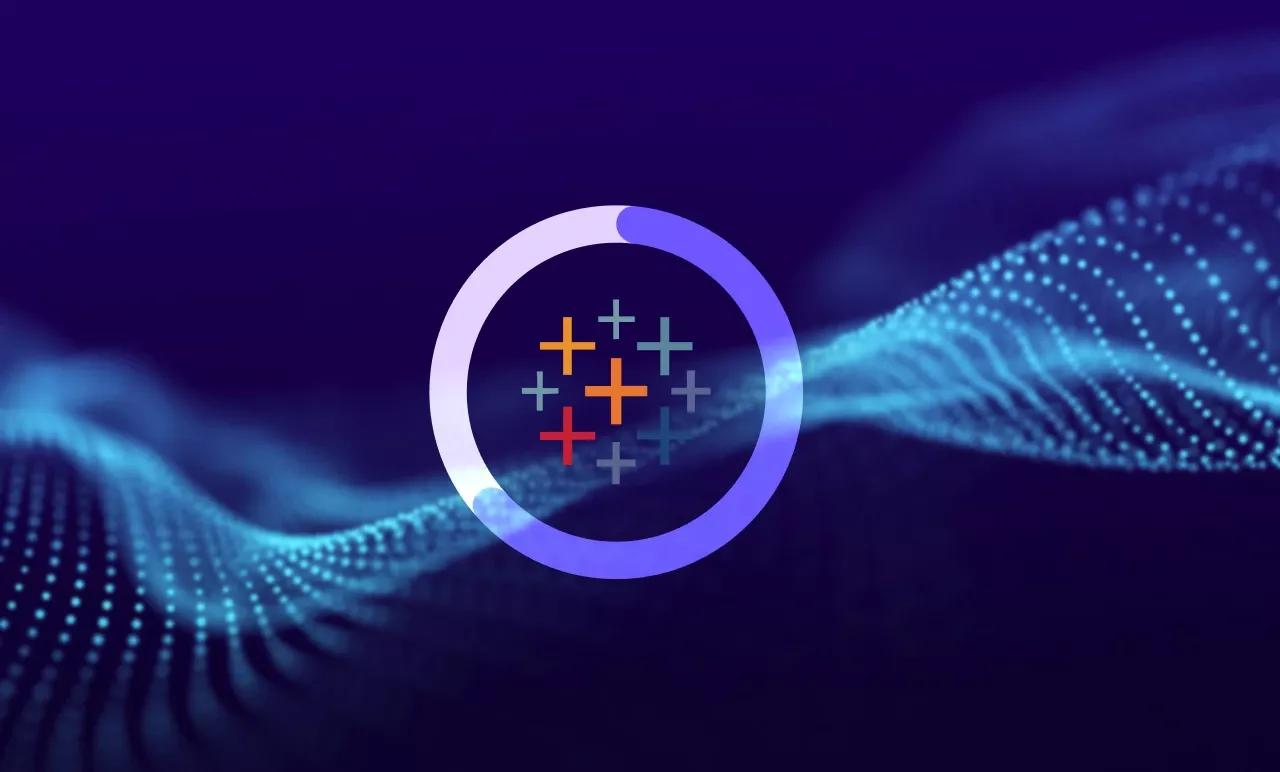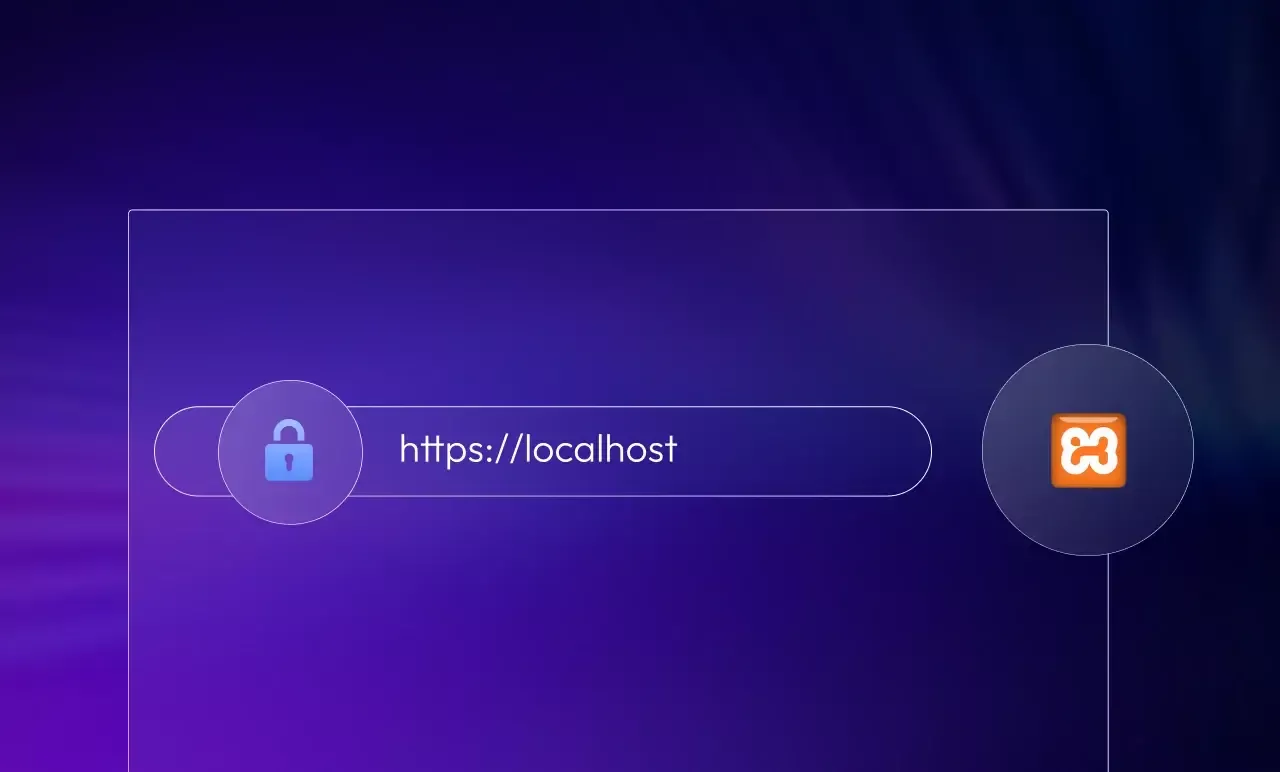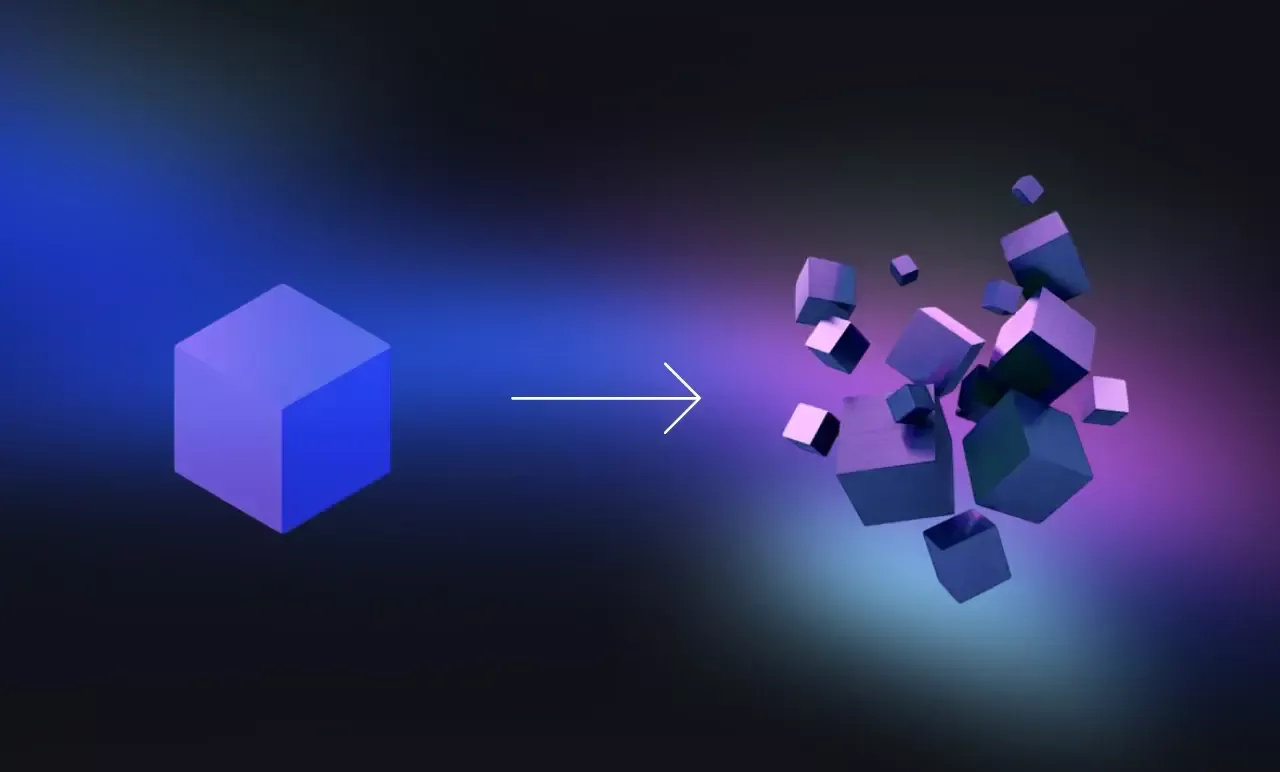Data Storage Decoded: Data Warehouse vs Data Lake Explained
Top 6 Mobile App Development Frameworks Ruling the Market in 2025
As we move through 2025, the demand for flexible, high-performance apps continues to grow. Following in the footsteps is the number of mobile application development frameworks designed to meet that need.
These powerful toolkits simplify and speed up app creation by offering pre-built components, code reusability, and support for both iOS and Android. From hybrid solutions to cross-platform powerhouses, the options are vast.
However, with so many options at disposal, investing in the right one is key to building fast, scalable apps that drive engagement, without blowing up budgets.
Let’s explore the top contenders for mobile app development frameworks leading the charge this year and why they’re worth your attention.
What are the 3 types of mobile application development frameworks?
Here is a categorized list of mobile application development frameworks based on their different technologies and usability.
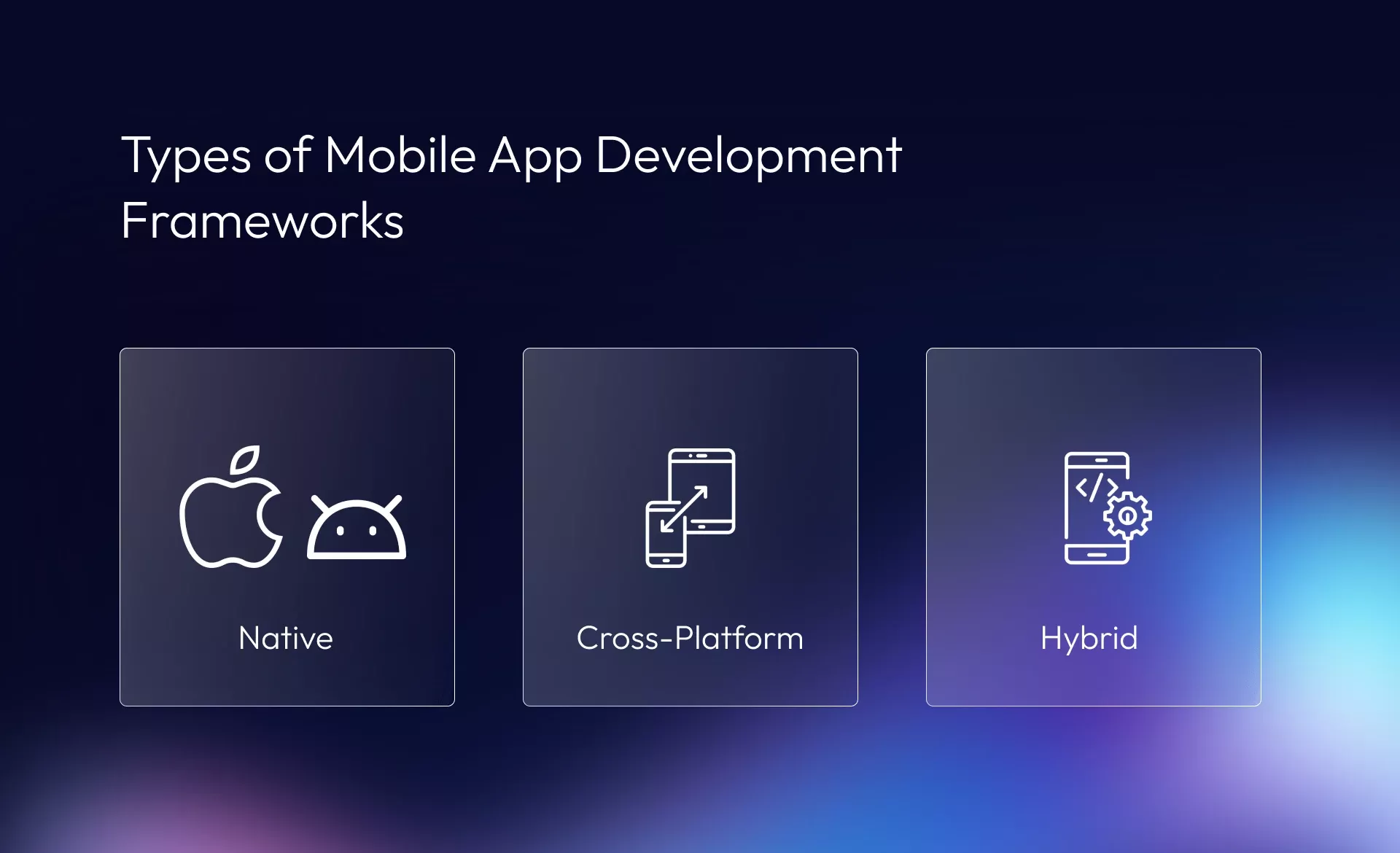
Native Apps
Native apps are built specifically for a particular platform or operating system. They don’t involve “frameworks” in the same way as cross-platform apps do. Instead, they rely on platform-specific languages like Swift for iOS and Kotlin for Android. These are used along with the respective SDKs and development environments provided by Apple and Google.
- Built for: Single-platform compatibility using respective codebase.
- User Experience: Offers the best performance and deep integration with platform-specific guidelines.
- Pros:
- Superior performance and reliability.
- Full access to device hardware and OS features.
- Better security and offline capabilities. - Cons:
- Higher development cost and time.
- Requires separate codebases for iOS and Android.
- Regular updates are needed for OS changes.
Web-Native or Cross-Platform Apps
This is where actual frameworks come into play.
Cross-platform mobile apps use frameworks that allow a near-native experience while enabling compatibility across multiple platforms from a single codebase. The most notable among these are Flutter and React Native.
- Built for: iOS, Android, and sometimes web/desktop.
- User Experience: Near-native performance with adaptive UI.
- Pros:
- Code reusability across platforms saves time and cost.
- Access to native components for better performance.
- Large developer communities and support. - Cons:
- Some limitations in accessing deep native features
- Dependency on third-party libraries.
Hybrid Apps
Hybrid mobile application development frameworks like Ionic and Apache Cordova use a single codebase and run inside a WebView container, but function like native apps.
- Built for: Multiple platforms using a single codebase.
- User Experience: Good but often lacks native performance and fluidity.
- Pros:
- Faster development and lower cost compared to native apps.
- Easier maintenance with a single codebase.
- Can access some native device features via plugins - Cons:
- Slower than native apps
- Limited access to native features
- Potential UI inconsistencies
6 Popular Mobile App Development Frameworks in 2025
If you are wondering which framework is best for iOS development or Android development, here are 6 top options to ease your doubt:
Flutter
Flutter is a top choice among mobile application development frameworks today due to its robust nature. It allows developers to build high-performance applications for multiple platforms using a single codebase. Since its release by Google in 2017, Flutter has gained popularity among businesses and developers. This is because it uses Dart, a programming language from Google designed for efficiency and flexibility in UI development.
Flutter has become a popular choice for businesses and developers. Its ability to create seamless user experiences across iOS, Android, web, and desktop applications makes it a versatile framework.
Key Features of Flutter:
- Hot Reload: Enables developers to see changes instantly without recompiling, significantly speeding up development.
- Material Design Support: Provides access to Google’s design system, making it easier to create visually appealing and user-friendly interfaces.
- Own Rendering Engine: Unlike many frameworks that rely on web technologies, Flutter has its own rendering engine, ensuring smooth performance across platforms.
- Multi-Platform Support: Flutter applications run efficiently on iOS, Android, web, and desktop without requiring separate codebases.
Notable applications: eBay, Alibaba, Google Pay, and ByteDance.
React Native
React Native is a powerful open-source framework that enables developers to create high-performance mobile applications using JavaScript. Developed by Meta (formerly Facebook) in 2015, it has become a preferred choice for enterprises. Many rely on it to build scalable, cross-platform mobile applications with near-native performance.
React Native leverages the same React library used for web development. This allows businesses to streamline development processes while ensuring a seamless user experience across both iOS and Android.
Key Features of React Native:
- Fast Refresh: Allows developers to see UI updates instantly, speeding up the development process.
- Optimized for UI: Uses native UI components, ensuring smooth performance and a high-quality user experience.
- Integration with Flipper: A built-in mobile app debugging tool that offers features like a log viewer, interactive layout inspector, and network inspector for easier troubleshooting.
- Large Developer Community: A strong and active community continuously contributes to improvements, provides support, and shares technical expertise.
Notable applications: Microsoft Office, Skype, Facebook, Instagram, and Xbox Game Pass.
Xamarin
Another of the cross-platform mobile app development frameworks worth mentioning is Xamarin. Developed by Microsoft, Xamarin allows developers to build native Android, iOS, and Windows applications using a shared C# codebase within the .NET ecosystem.
It streamlines development with seamless Visual Studio integration and access to native APIs, helping businesses deliver high-quality apps faster and more cost-effectively. Used by around 8% of global developers, Xamarin is ideal for projects aiming to maximize code reuse without compromising on performance or user experience.
Key Features of Xamarin:
- Unified Codebase: Enables development across Android, iOS, and Windows using a single C# codebase, minimizing duplication.
- Native Performance: Provides direct access to native APIs and UI components, ensuring a true native look and feel.
- Visual Studio Integration: Allows seamless integration with Microsoft’s Visual Studio, streamlining project management and deployment.
- Comprehensive Toolset: Developers can benefit from built-in emulators, SDK managers, diagnostics, and pattern-based libraries.
- Accelerated Development: Reduced code volume and efficient scripting contribute to faster development cycles.
- Backend Compatibility: Supports smooth integration with RESTful APIs, cloud platforms, and backend systems. Some notable applications built with Xamarin include The World Bank, BBC Good Food, Alaska Airlines, FreshDirect, and MRW Courier.
Ionic
Ionic is a popular open-source hybrid framework that enables efficient cross-platform mobile app development using web technologies like HTML, CSS, and JavaScript. Launched by Drifty Co. in 2013, it supports Angular, TypeScript, and plugins like Capacitor and Cordova to access native device features.
Ideal for building hybrid and progressive web apps, Ionic offers fast development cycles, consistent UI across platforms, and compatibility with Android, iOS, and Windows, making it a top choice for scalable mobile app solutions.
Key Features of Ionic:
- Single Codebase Support: Build applications for Android, iOS, and Windows using one HTML/CSS/JavaScript codebase.
- Intuitive UI Components: Includes pre-built forms, navigation menus, and action sheets to speed up development and ensure design consistency.
- Access to Native Features: Leverage Capacitor or Cordova plugins to integrate device-level functionality like camera, GPS, or push notifications.
- Angular Integration: Offers built-in support for Angular, enhancing development with powerful tooling and structure.
- Performance Optimized: Minimal use of DOM and efficient rendering contribute to smooth, high-performance apps.
- Developer-Friendly Tools: Includes CLI for app generation and management, plus support for custom animations and transitions.JustWatch, McDonald’s Turkey App, TD Ameritrade, Honeyfi, Sworkit, Diesel, MarketWatch are some of the popular apps built with Ionic.
Apache Cordova
Apache Cordova, formerly known as PhoneGap, is a popular open-source framework for building cross-platform mobile apps using HTML5, CSS3, and JavaScript. Known for its simplicity and developer-friendly environment, it enables native-like experiences without platform-specific code.
With a single codebase and a wide range of plugins, Cordova offers access to device features like the camera and GPS. Its fast development cycle and support for third-party tools make it ideal for businesses seeking quick, efficient app deployment.
Key Features of Apache Cordova:
- Single Codebase: Enables cross-platform development with one codebase written in HTML, CSS, and JavaScript.
- Native Plugin Support: Offers plugins for accessing device features like the camera, GPS, accelerometer, and more.
- Fast Development Cycle: Simplifies the build process for faster delivery and reduced time-to-market.
- Third-Party Tool Integration: Supports external app management and deployment tools to streamline operations.
- Open-Source & Community Driven: Backed by the Apache Software Foundation with a strong community of contributors.
Notable Applications Built with Cordova:
Adobe’s PhoneGap Developer App, FanReact, JustWatch (early versions), TripCase
Swiftic
Designed for ease of use, Swiftic is a no-code mobile app development framework that helps businesses, especially small ones, to create mobile applications from websites or social media pages into iOS apps without technical expertise. Developed by Como DIY in 2014, it offers tools for app promotion, customer engagement, and monetization. Its features include loyalty cards, push notifications, and in-app coupons.
With seamless third-party integrations and app publication support, Swiftic ensures a smooth experience.
Key Features of Swiftic:
- No-Code Interface: Intuitive drag-and-drop tools for non-developers.
- Third-Party Integration: Easy integration with payment systems, analytics, and engagement platforms.
- In-App Engagement Tools: Push notifications, loyalty cards, coupons, scratch cards, and more.
- Social Media & Feeds: Integration with real-time social media feeds.
- App Promotion & Support: Tools for publishing, marketing, and analyzing app performance.
- Customer-Centric Design: Direct communication and engagement features for users within the app.
Notable Applications Built with Swiftic:
Spa Cafe, Muve Magazine, The Gentlemen’s Barber, The Clubhouse, Remix Coffee Co, Mt. Royal Bagel Co
Which Is the Best Mobile Application Development Framework in 2025?

How to Choose the Best Framework for Mobile App Development?
With countless mobile application development frameworks available, choosing the right one can be overwhelming. Each has unique strengths and limitations, making it essential to align your choice with business goals, team expertise, and user needs.
Here’s how you can make an informed decision.
1. Assess Your Team’s Expertise
Choose a framework aligned with your team's programming skills to reduce the learning curve. If your team is proficient in JavaScript, for instance, React Native might be a natural choice.
2. Evaluate Vendor Support
Opt for frameworks backed by reliable companies and active communities to ensure long-term stability, regular updates, and ongoing support.
3. Prioritize UI and Customization Flexibility
UI customization is crucial for any successful app development for mobile. Consider how easily the framework allows you to tailor your online brand design and maintain visual consistency across devices.
4. Consider the Framework’s Maturity and Stability
Select a stable, well-maintained framework with predictable update cycles to minimize disruptions and ensure smoother development.
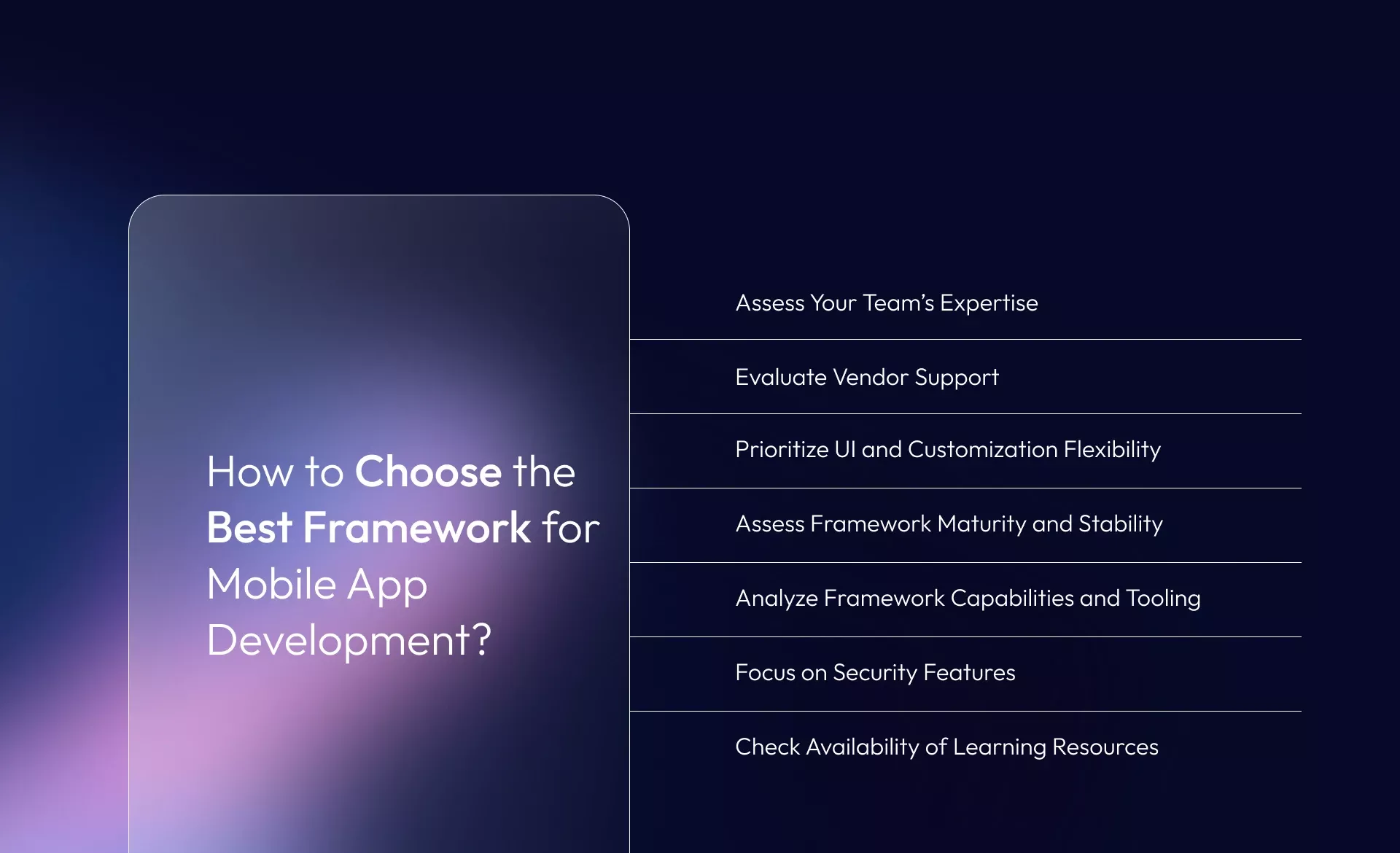
5. Analyze Framework Capabilities and Tooling
Every framework offers unique capabilities. Review code-sharing options, debugging tools, and testing support.
Choosing a framework with strong tooling and support will make the development process more efficient.
6. Focus on Security Features
Ensure the framework includes built-in security features to protect sensitive data and is regularly updated to address vulnerabilities.
7. Check Availability of Learning Resources
Frameworks with strong documentation, tutorials, and developer communities help accelerate onboarding and troubleshooting.
Final Thoughts on The Right Framework for Your Business
Choosing the best mobile application development framework and tools is key to building scalable, secure, and high-performing applications while avoiding costly inefficiencies.
Mobile application development frameworks like Flutter and React Native are leading the way in cross-platform development. With these tools, businesses can create robust, adaptable applications that stand out in a competitive market.
Beyond framework selection, optimizing user experience with GPU-accelerated rendering, seamless animations, and fast load times enhances performance. Integrating AI, cloud-native technologies, and scalable backend solutions further future-proofs mobile apps, ensuring they remain efficient and adaptable across iOS and Android.
As mobile ecosystems evolve, so do the tools that power them. now is the right time to evaluate the most effective frameworks for their app development initiatives. The options outlined above represent some of the most powerful and reliable choices available today.
For organizations with a clear app vision, this is an ideal moment to move forward with development. The right framework can help deliver seamless performance, scalability, and user engagement—tailored to specific business goals.
To explore how mobile solutions can elevate your operations or customer experience, connect with a technology partner. Choose one equipped to align development strategies with long-term success.
Email us or Talk to us at +91-98367-81929 or Simply Contact Us through the website.
Let's Connect


